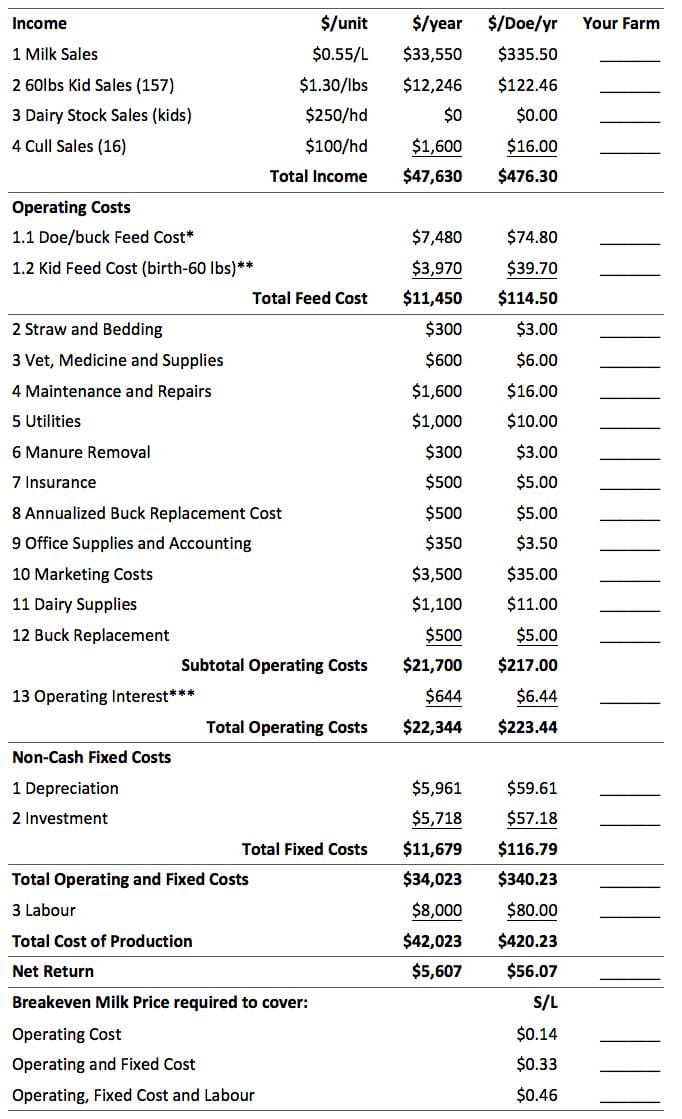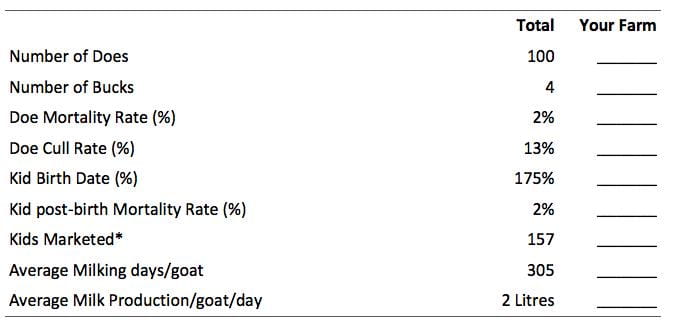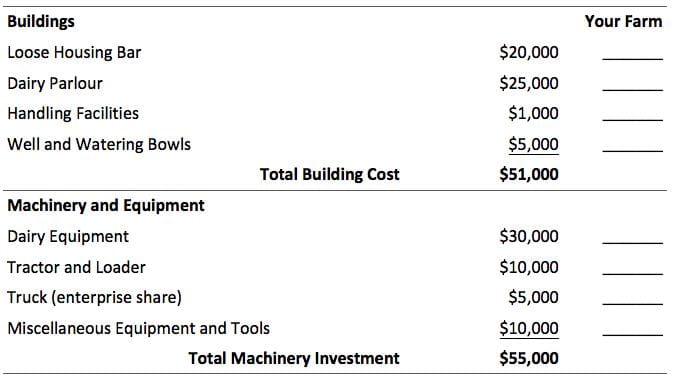Investment and Operating Costs for Dairy Goat Production
These guidelines determine costs of production for dairy goat operations. The production costs included in these enterprise budgets are based on information obtained from a variety of sources. While these figures were considered accurate at the time of publishing, they should only be used as a guideline when preparing your own budgets.
The benchmark figures used in the budgets are calculated for a stand-alone enterprise rather than an enterprise that is part of a multi-enterprise farm unit. In a multi-enterprise farm operation building and equipment investment and operating costs could be shared between enterprises reducing costs from those shown in the example.
It is important to recognize that investment costs include:
- A 4% return to the land, and
- A 6% return to buildings, equipment, and breeding stock.
A charge for operator management and labour has also been included.
Given the economic environment in agriculture, many types of farm operations are not able to cover all costs of production. As a result, producers need to use their own figures based on their own practices to evaluate various production alternatives to generate the greatest return from their available resources.
Market Overview
More people in the world drink goat milk than cow milk; however, the opposite is the case in North America. Goat milk is similar nutritionally to cow milk, but contains smaller fat globules and as a consequence is easier for some people to digest. As well, because of the smaller fat globules goat milk does not require homogenization.
Currently, a large portion of goat milk sales take place through the farm gate with producers selling directly to consumers. Saskatchewan Health regulations require all farm gate operations to hold a valid Category II milk licence. This licence permits the sale of the pasteurized fluid milk and restricts the volume to 100 litres of goat milk per day.
Opportunities also exist for producers to sell directly to a dairy processing plant with no quantity restrictions. Producers should be aware that the dairy goat industry is not subject to the same milk quota restrictions as the dairy cow industry. This allows producers to start or expand a dairy goat enterprise without having to purchase quota.
Income and Expense Summary for a 100 Doe Dairy Enterprise

*Doe/Buck feed costs are based on 5.5 lbs of hay/day, 1.5 lbs of oats/day and .03 lbs of salt and minerals/day (ration is fed year round)
** Based on an average ration of 3.0 lbs of hay/day and 1 lbs of oats/day for 210 days.
*** Operating interest is based on 1/3 of operating costs at a 9% interest rate.
Herd Profile

*Kids marketed is equal to the number of kids weaned less post-weaning mortality and doelings retained for replacements.
**For this scenario all kids are marketed at an average weight of 60 lbs.
Capital Investment

